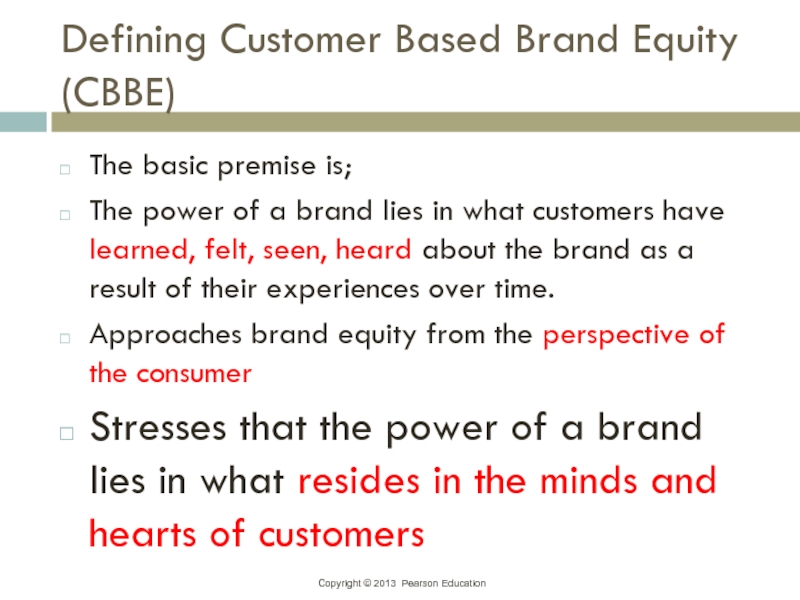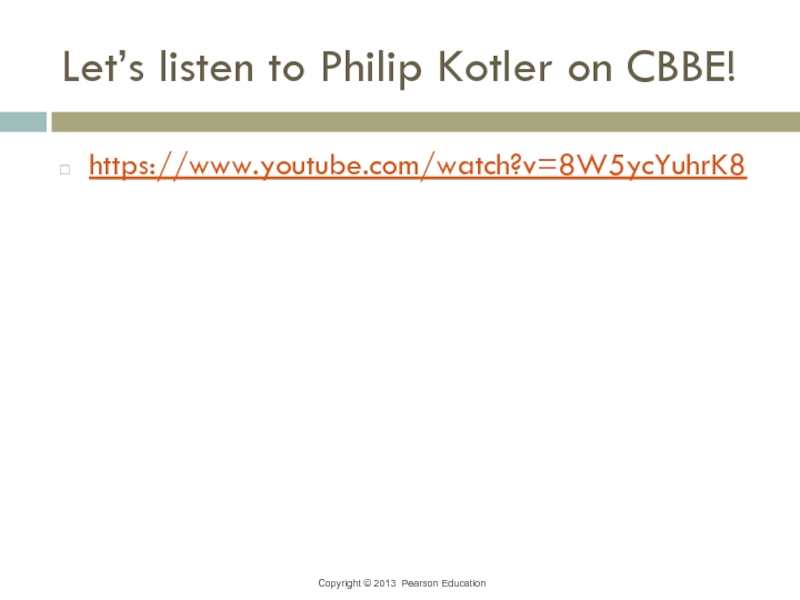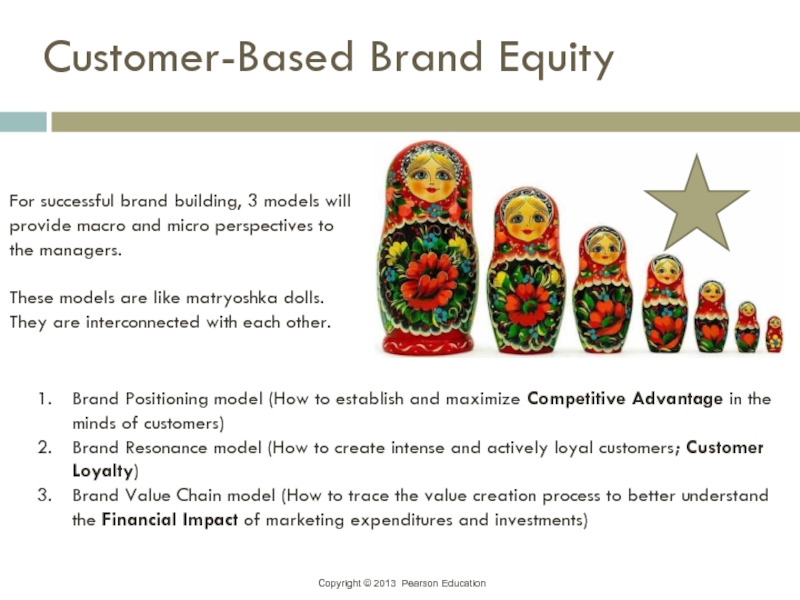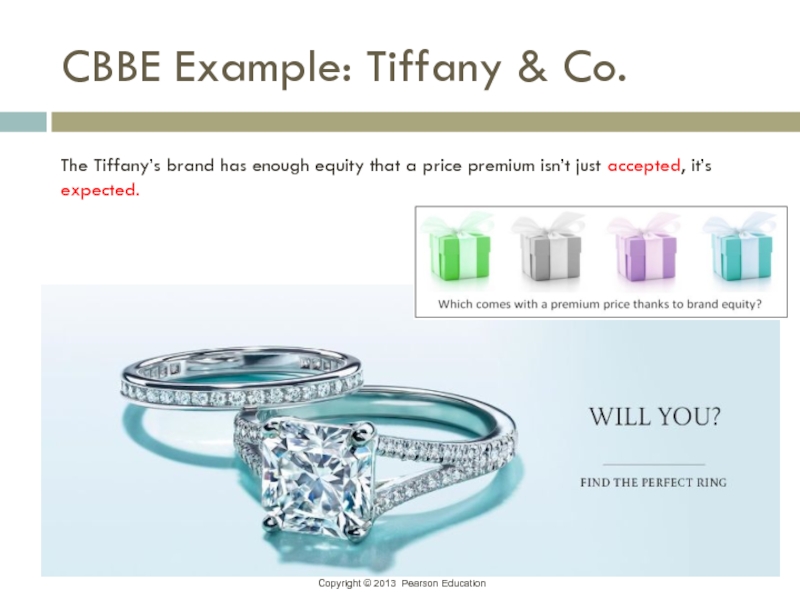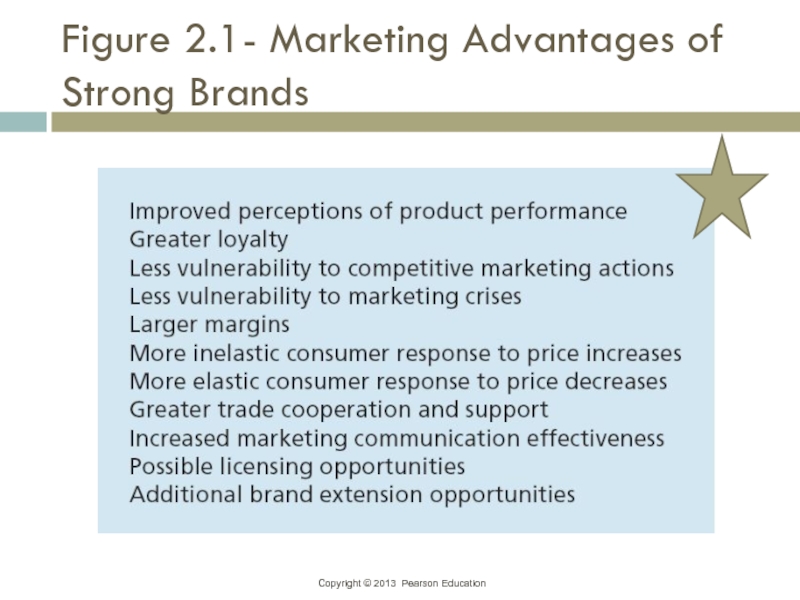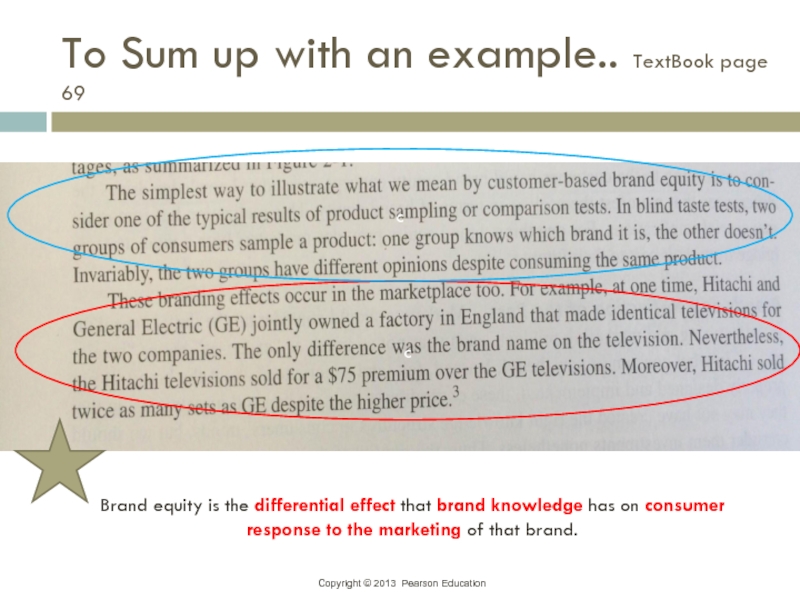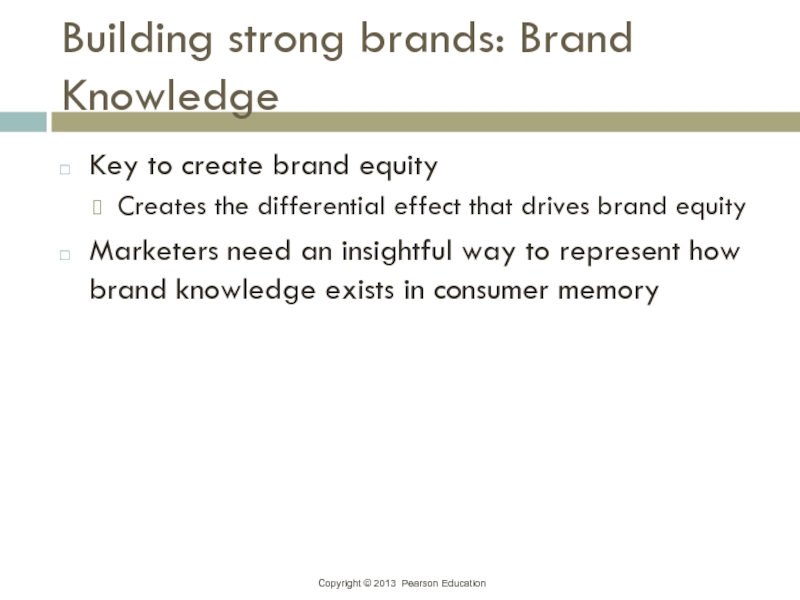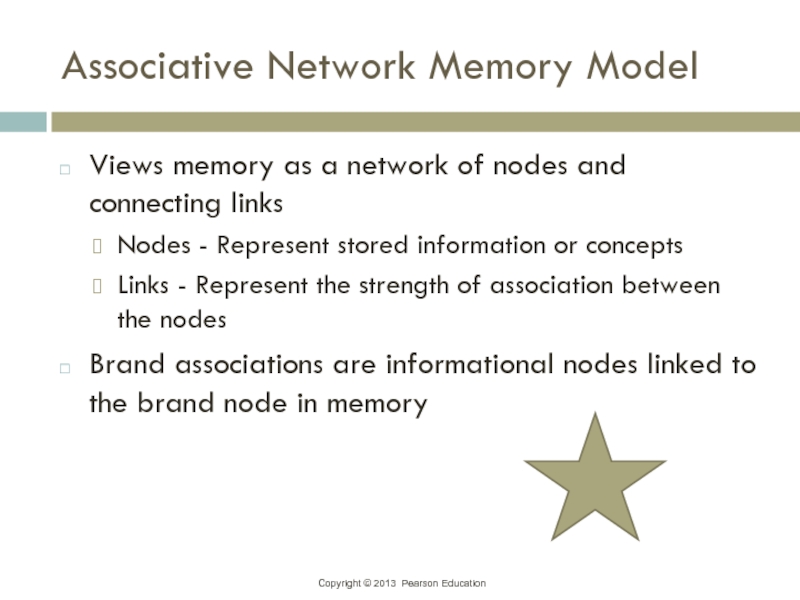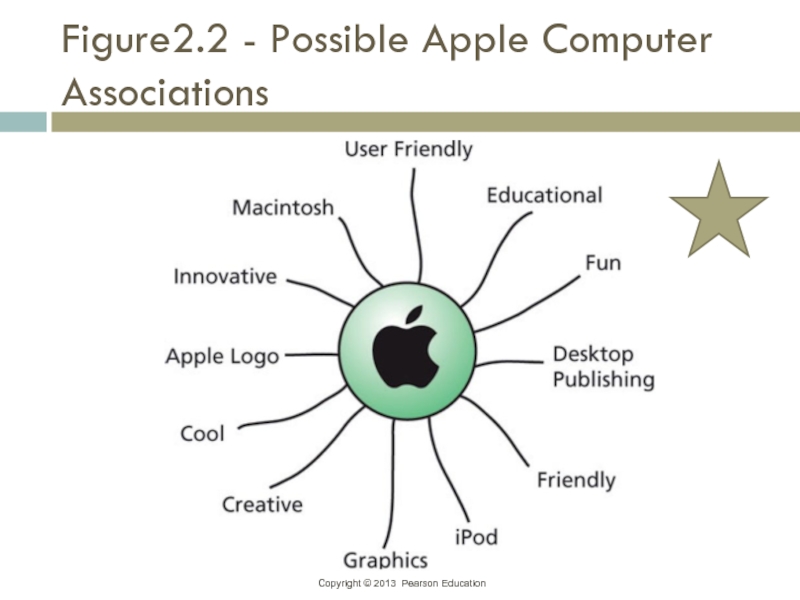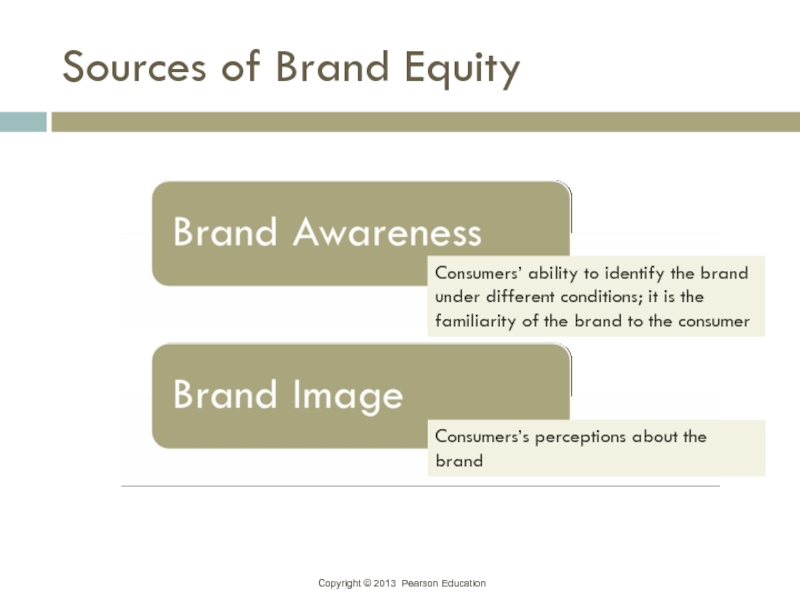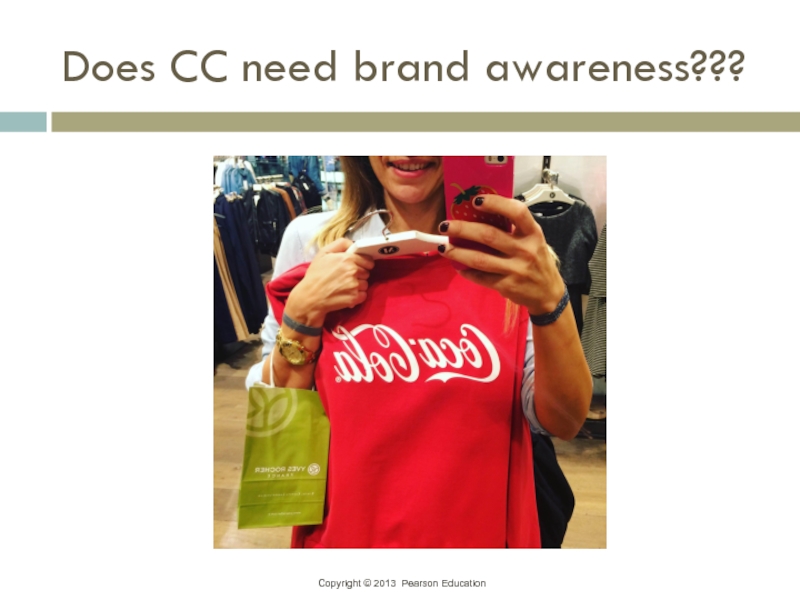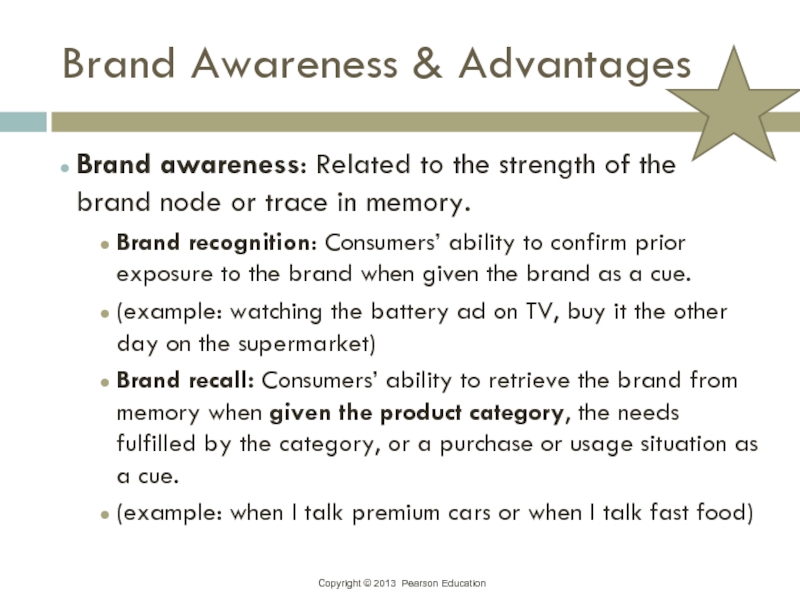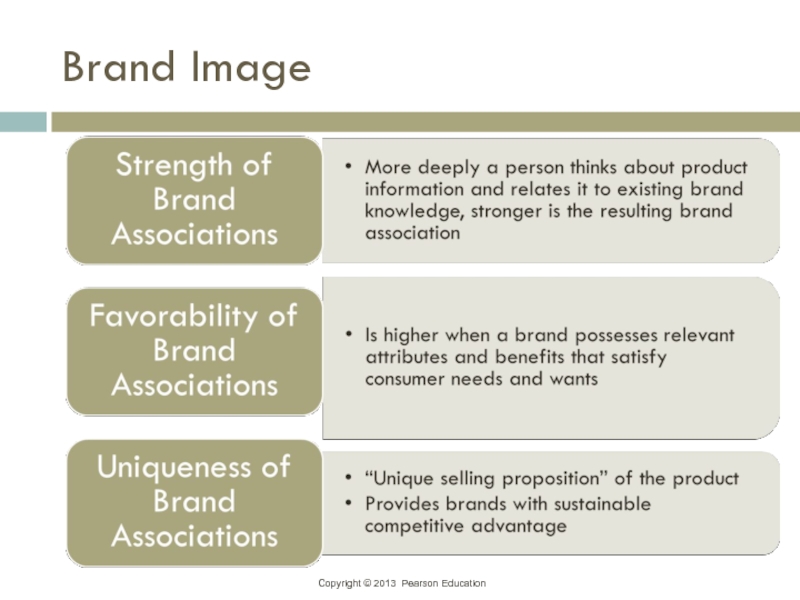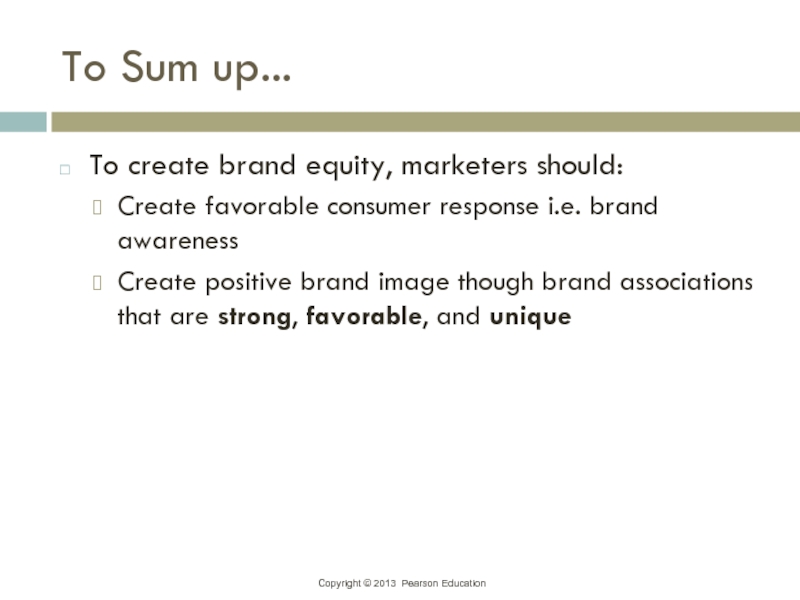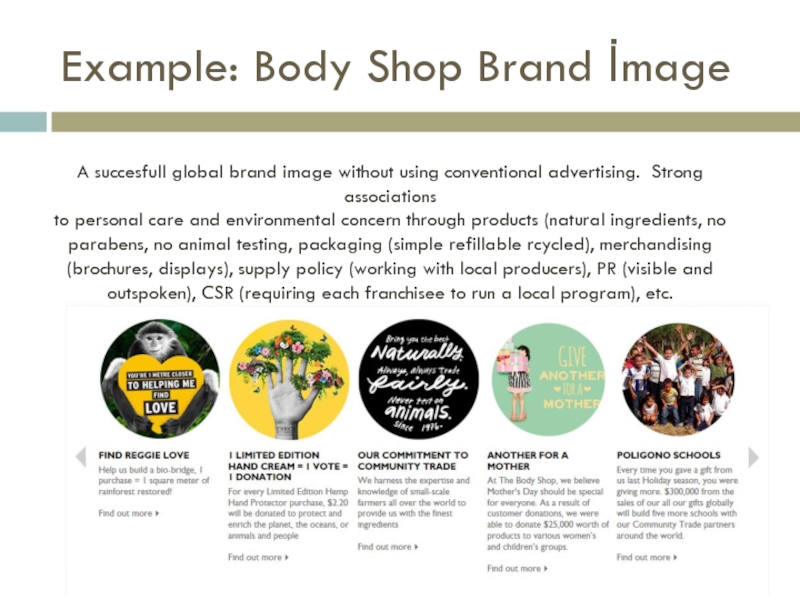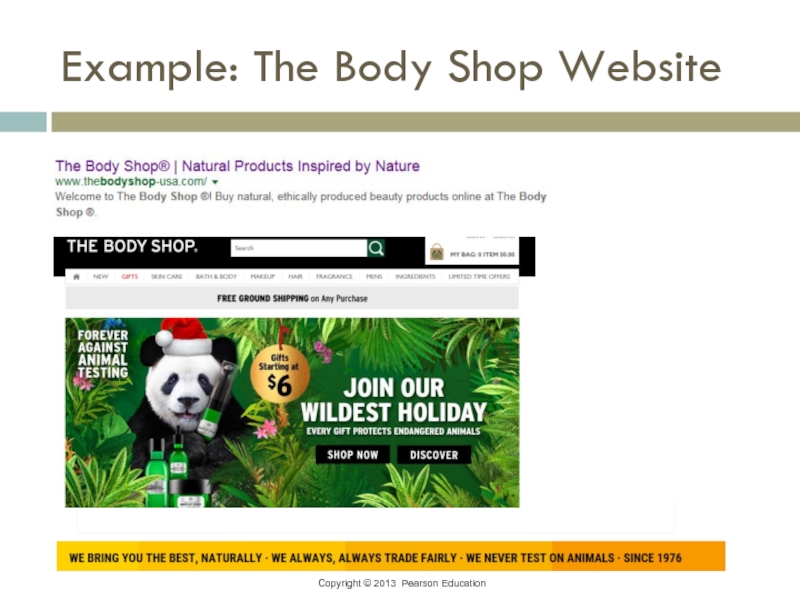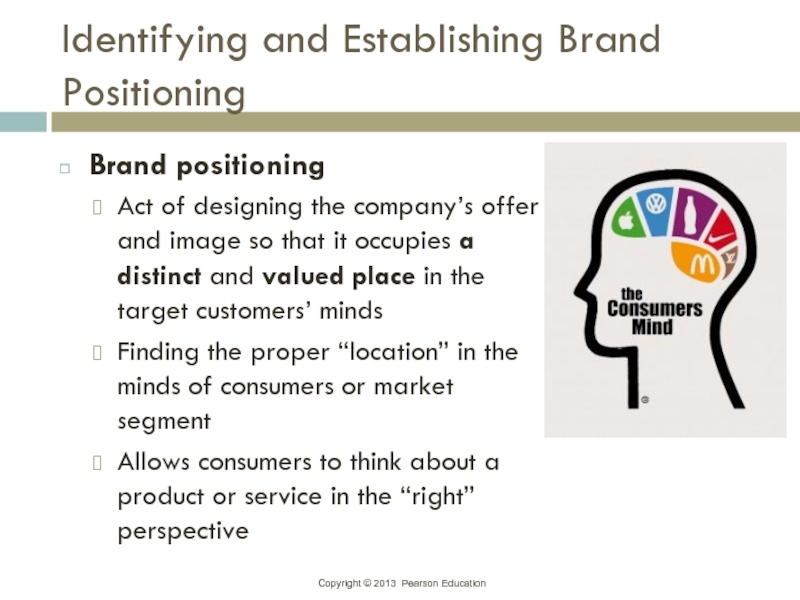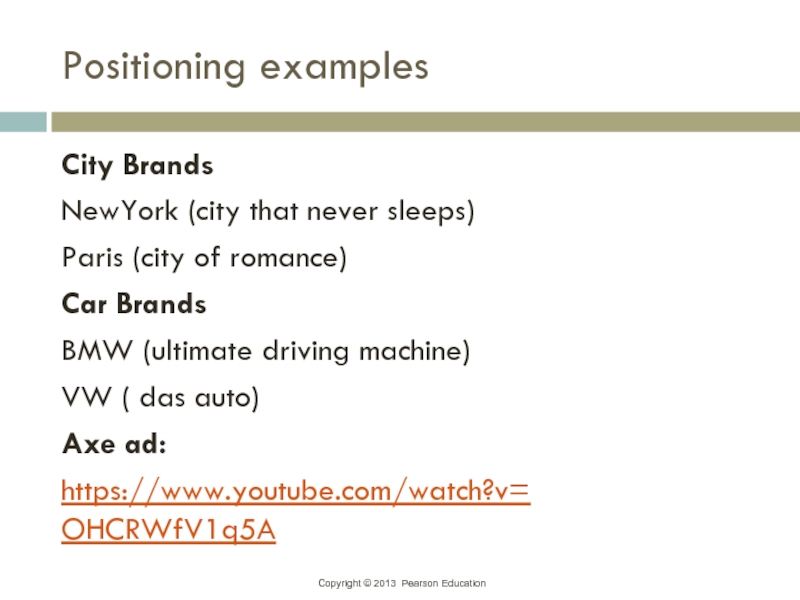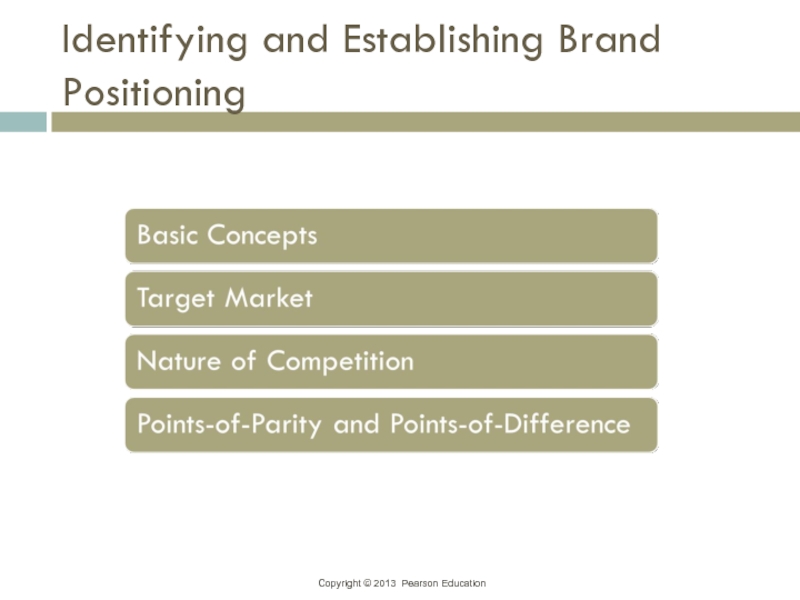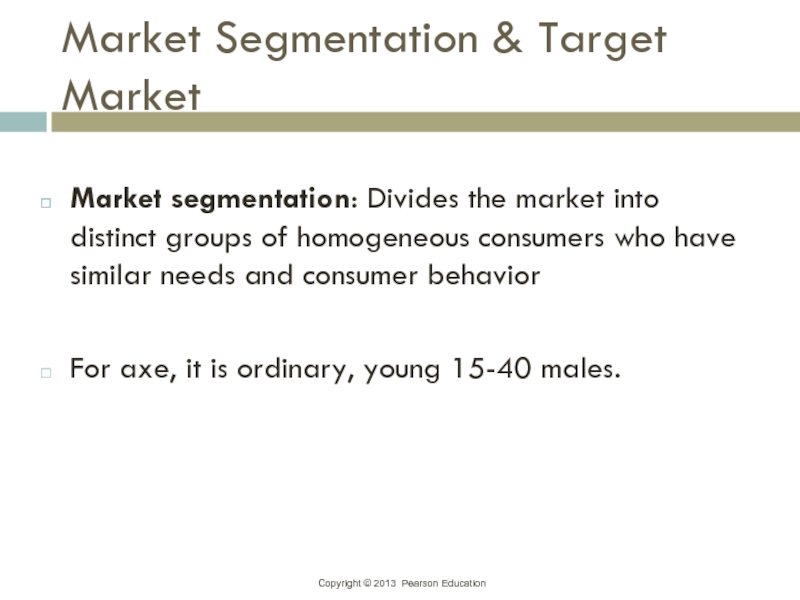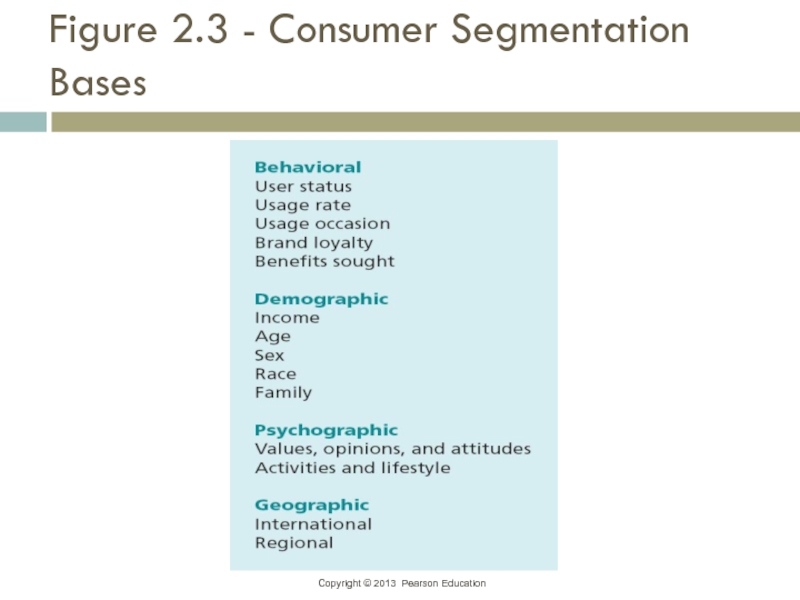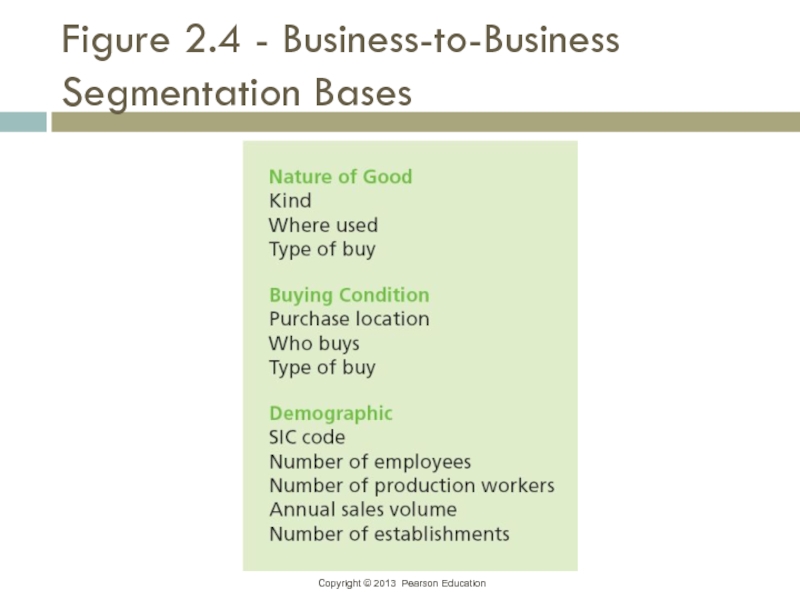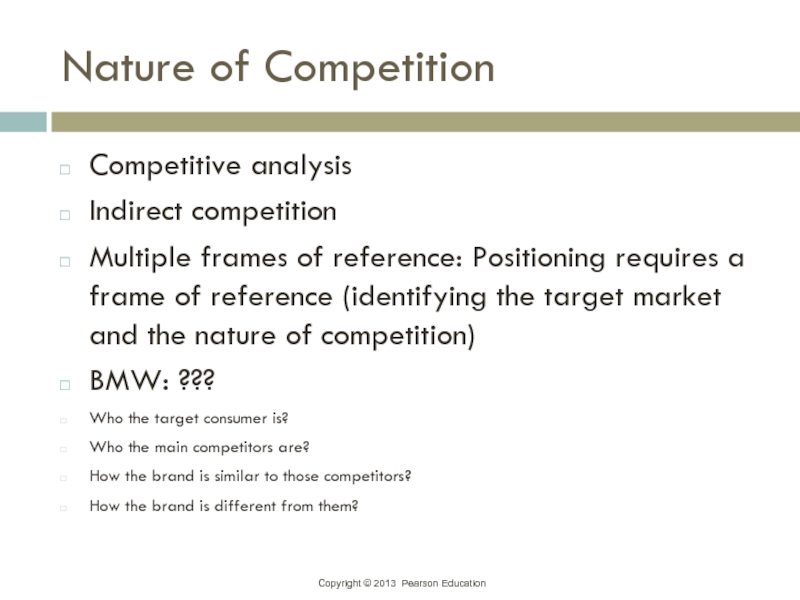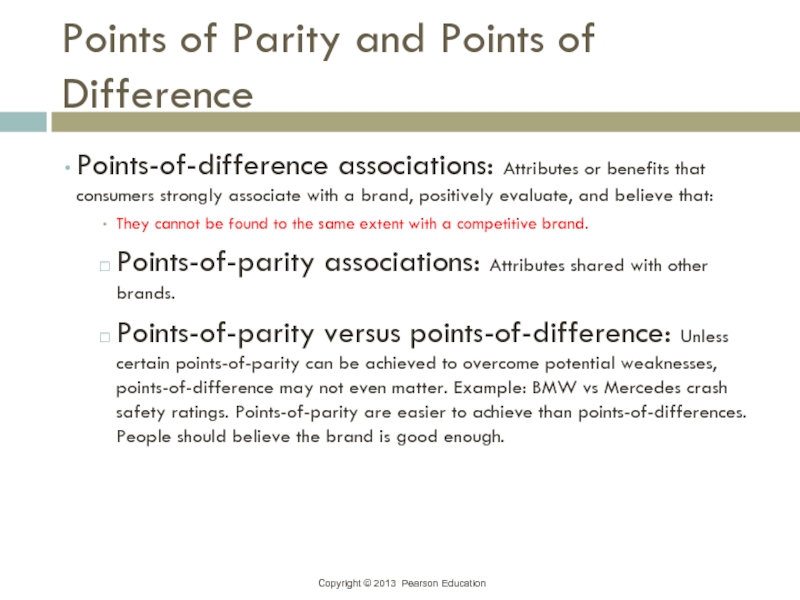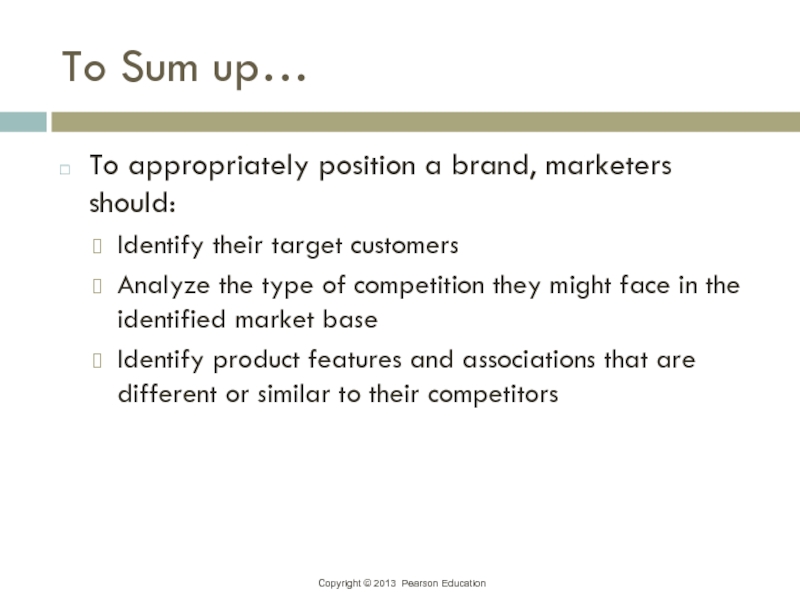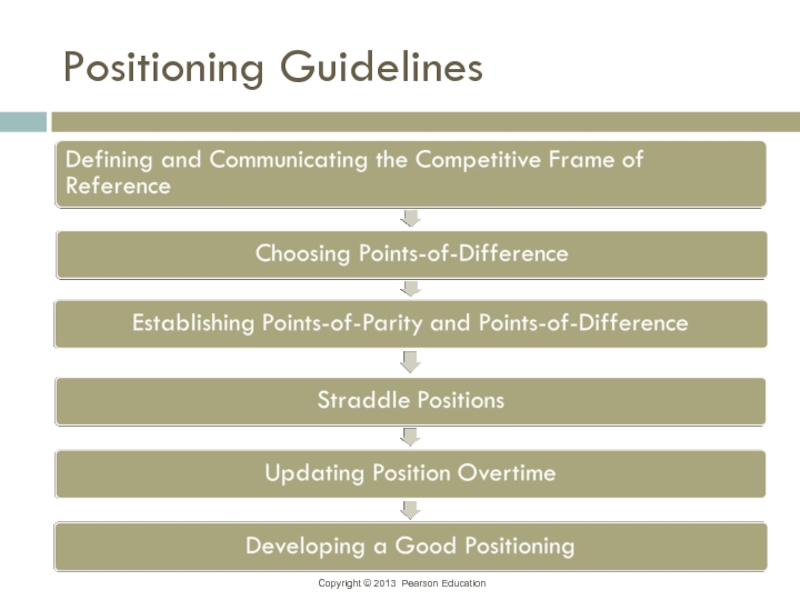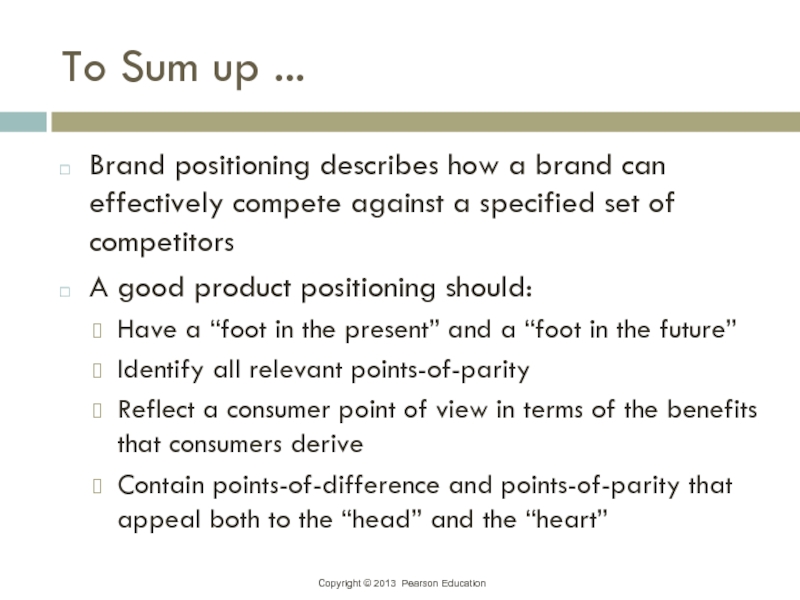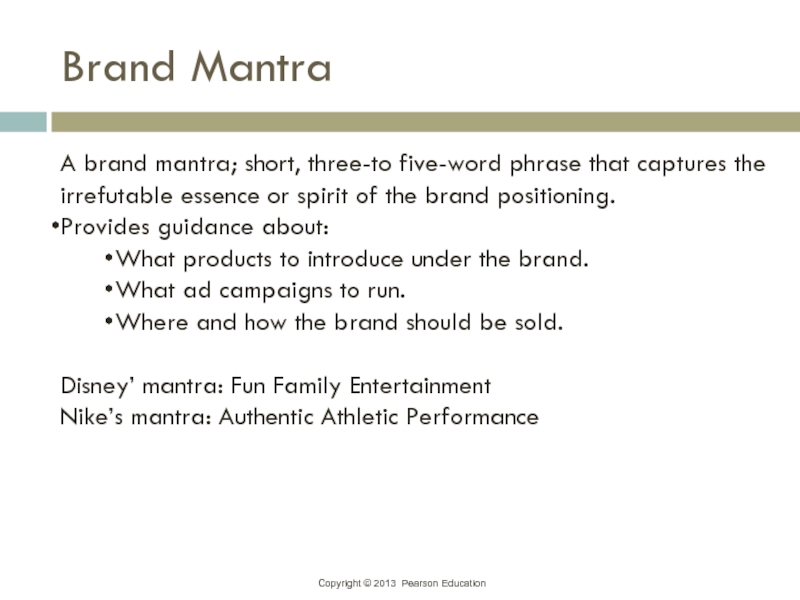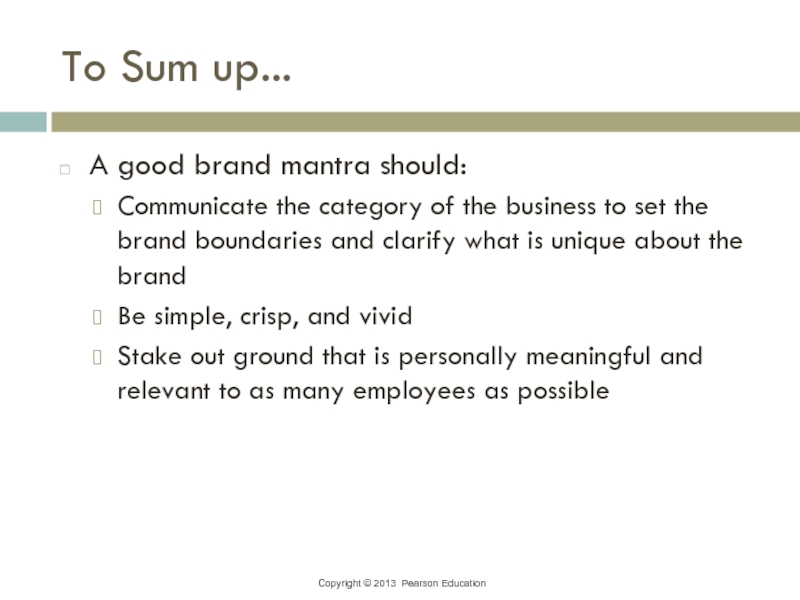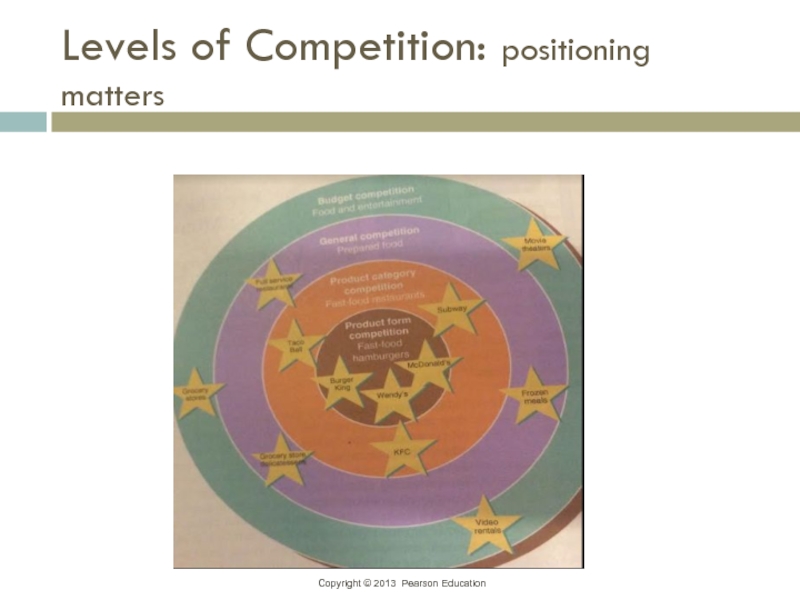- Главная
- Разное
- Дизайн
- Бизнес и предпринимательство
- Аналитика
- Образование
- Развлечения
- Красота и здоровье
- Финансы
- Государство
- Путешествия
- Спорт
- Недвижимость
- Армия
- Графика
- Культурология
- Еда и кулинария
- Лингвистика
- Английский язык
- Астрономия
- Алгебра
- Биология
- География
- Детские презентации
- Информатика
- История
- Литература
- Маркетинг
- Математика
- Медицина
- Менеджмент
- Музыка
- МХК
- Немецкий язык
- ОБЖ
- Обществознание
- Окружающий мир
- Педагогика
- Русский язык
- Технология
- Физика
- Философия
- Химия
- Шаблоны, картинки для презентаций
- Экология
- Экономика
- Юриспруденция
Customer-based equity and brand positioning (chapter 2) презентация
Содержание
- 1. Customer-based equity and brand positioning (chapter 2)
- 2. Defining Customer Based Brand Equity (CBBE) The
- 3. Let’s listen to Philip Kotler on CBBE! https://www.youtube.com/watch?v=8W5ycYuhrK8
- 4. Customer-Based Brand Equity For successful brand building,
- 5. CBBE Example: Tiffany & Co. The Tiffany’s
- 6. Figure 2.1- Marketing Advantages of Strong Brands
- 7. To Sum up with an example.. TextBook
- 8. Identify and differentiate…REMEMBER! According to AMA (American
- 9. Building strong brands: Brand Knowledge Key to
- 10. Associative Network Memory Model Views memory
- 11. Figure2.2 - Possible Apple Computer Associations
- 12. Sources of Brand Equity Consumers’ ability to
- 13. Does CC need brand awareness???
- 14. Brand Awareness & Advantages Brand awareness: Related
- 15. Brand Image
- 16. To Sum up... To create brand equity,
- 17. Example: Body Shop Brand İmage A succesfull
- 18. Example: The Body Shop Website
- 19. Identifying and Establishing Brand Positioning Brand positioning
- 20. Positioning examples City Brands NewYork (city that
- 21. Identifying and Establishing Brand Positioning
- 22. Market Segmentation & Target Market Market segmentation:
- 23. Figure 2.3 - Consumer Segmentation Bases
- 24. Figure 2.4 - Business-to-Business Segmentation Bases
- 25. Nature of Competition Competitive analysis Indirect
- 26. Points of Parity and Points of Difference
- 27. To Sum up… To appropriately position a
- 28. Positioning Guidelines
- 29. To Sum up ... Brand positioning describes
- 30. Brand Mantra A brand mantra; short, three-to
- 31. To Sum up... A good brand mantra
- 32. Levels of Competition: positioning matters
Слайд 2Defining Customer Based Brand Equity (CBBE)
The basic premise is;
The power of
Approaches brand equity from the perspective of the consumer
Stresses that the power of a brand lies in what resides in the minds and hearts of customers
Слайд 4Customer-Based Brand Equity
For successful brand building, 3 models will provide macro
These models are like matryoshka dolls. They are interconnected with each other.
Brand Positioning model (How to establish and maximize Competitive Advantage in the minds of customers)
Brand Resonance model (How to create intense and actively loyal customers; Customer Loyalty)
Brand Value Chain model (How to trace the value creation process to better understand the Financial Impact of marketing expenditures and investments)
Слайд 5CBBE Example: Tiffany & Co.
The Tiffany’s brand has enough equity that
Слайд 7To Sum up with an example.. TextBook page 69
c
c
Brand equity is
Слайд 8Identify and differentiate…REMEMBER!
According to AMA (American Marketing Association)
A brand is “
2 tricky words: identify and differentiate
Слайд 9Building strong brands: Brand Knowledge
Key to create brand equity
Creates the differential
Marketers need an insightful way to represent how brand knowledge exists in consumer memory
Слайд 10Associative Network Memory Model
Views memory as a network of nodes
Nodes - Represent stored information or concepts
Links - Represent the strength of association between the nodes
Brand associations are informational nodes linked to the brand node in memory
Слайд 12Sources of Brand Equity
Consumers’ ability to identify the brand under different
Consumers’s perceptions about the brand
Слайд 14Brand Awareness & Advantages
Brand awareness: Related to the strength of the
Brand recognition: Consumers’ ability to confirm prior exposure to the brand when given the brand as a cue.
(example: watching the battery ad on TV, buy it the other day on the supermarket)
Brand recall: Consumers’ ability to retrieve the brand from memory when given the product category, the needs fulfilled by the category, or a purchase or usage situation as a cue.
(example: when I talk premium cars or when I talk fast food)
Слайд 16To Sum up...
To create brand equity, marketers should:
Create favorable consumer response
Create positive brand image though brand associations that are strong, favorable, and unique
Слайд 17Example: Body Shop Brand İmage
A succesfull global brand image without using
to personal care and environmental concern through products (natural ingredients, no parabens, no animal testing, packaging (simple refillable rcycled), merchandising (brochures, displays), supply policy (working with local producers), PR (visible and outspoken), CSR (requiring each franchisee to run a local program), etc.
Слайд 19Identifying and Establishing Brand Positioning
Brand positioning
Act of designing the company’s offer
Finding the proper “location” in the minds of consumers or market segment
Allows consumers to think about a product or service in the “right” perspective
Слайд 20Positioning examples
City Brands
NewYork (city that never sleeps)
Paris (city of romance)
Car Brands
BMW
VW ( das auto)
Axe ad:
https://www.youtube.com/watch?v=OHCRWfV1q5A
Слайд 22Market Segmentation & Target Market
Market segmentation: Divides the market into distinct
For axe, it is ordinary, young 15-40 males.
Слайд 25Nature of Competition
Competitive analysis
Indirect competition
Multiple frames of reference: Positioning requires
BMW: ???
Who the target consumer is?
Who the main competitors are?
How the brand is similar to those competitors?
How the brand is different from them?
Слайд 26Points of Parity and Points of Difference
Points-of-difference associations: Attributes or benefits
They cannot be found to the same extent with a competitive brand.
Points-of-parity associations: Attributes shared with other brands.
Points-of-parity versus points-of-difference: Unless certain points-of-parity can be achieved to overcome potential weaknesses, points-of-difference may not even matter. Example: BMW vs Mercedes crash safety ratings. Points-of-parity are easier to achieve than points-of-differences. People should believe the brand is good enough.
Слайд 27To Sum up…
To appropriately position a brand, marketers should:
Identify their target
Analyze the type of competition they might face in the identified market base
Identify product features and associations that are different or similar to their competitors
Слайд 29To Sum up ...
Brand positioning describes how a brand can effectively
A good product positioning should:
Have a “foot in the present” and a “foot in the future”
Identify all relevant points-of-parity
Reflect a consumer point of view in terms of the benefits that consumers derive
Contain points-of-difference and points-of-parity that appeal both to the “head” and the “heart”
Слайд 30Brand Mantra
A brand mantra; short, three-to five-word phrase that captures the
Provides guidance about:
What products to introduce under the brand.
What ad campaigns to run.
Where and how the brand should be sold.
Disney’ mantra: Fun Family Entertainment
Nike’s mantra: Authentic Athletic Performance
Слайд 31To Sum up...
A good brand mantra should:
Communicate the category of the
Be simple, crisp, and vivid
Stake out ground that is personally meaningful and relevant to as many employees as possible

